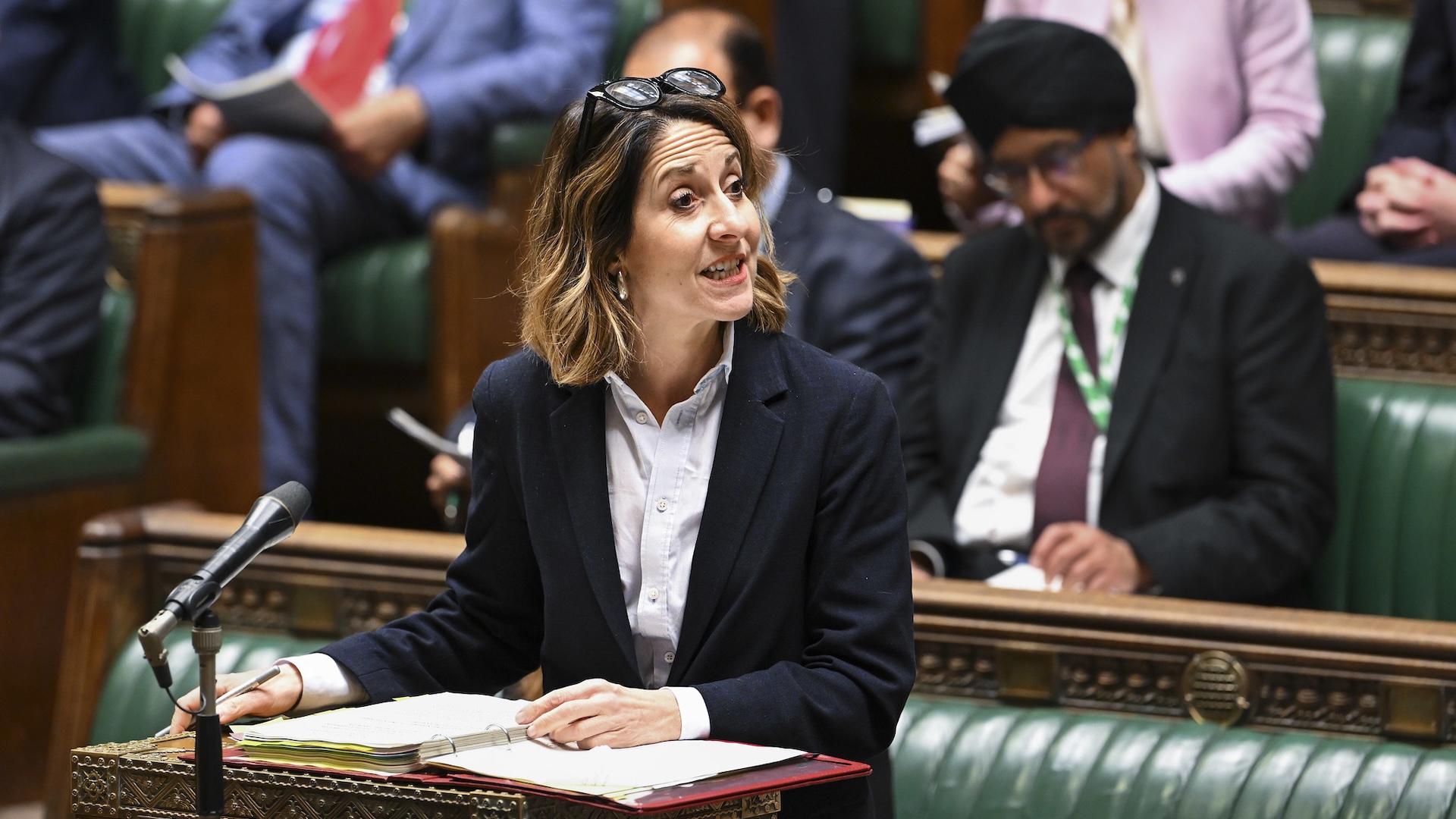The revelations came as a result of a judicial review into the legality of the consultation that was heard last week. The case has been brought by disability campaigner Ellen Clifford, a member of Disabled People Against Cuts (DPAC).
And while the consultation took place under the last government, the current Labour government has not dropped the planned cuts – and has fought the judicial review at every step.
The consultation
The work capability assessment (WCA) is used to decide who qualifies for out-of-work disability benefits, based on “scoring” the type and severity of an applicant’s disability or illness.
There are three possible outcomes to a WCA assessment:
• Fit for work – applicants do not qualify for disability benefit, and may be required to look for work if they receive universal credit
• Limited capability for work (LCW) – applicants qualify as disabled but receive no extra money; they are not required to look for work, but must engage in “work-related activity” to prepare for work
Advertising helps fund Big Issue’s mission to end poverty
• Limited capability for work and work-related activity (LCWRA) – applicants receive an extra £416 a month in disability benefit under universal credit, and don’t have to look for work or undertake work-related activity
On 5 September last year the Conservative government announced plans to reform the WCA by changing some of the ”descriptors”, which show how many points are scored in the assessment by different degrees of disability.
Specifically, the government wanted to reduce the extent to which problems with mobility, getting about, incontinence and social engagement could lead to people qualifying for disability benefits via the WCA.
The consultation also sought to change the “substantial risk” regulations, by which people don’t have to undertake work-related activity if doing so would cause a substantial risk to their health.
But while the press release to the media referred to a 62% rise in incapacity benefits spending over the previous ten years – with the Daily Mail reporting “the blitz is aimed at slashing the £26bn welfare budget” – the consultation itself made no such mention of this rationale for the measures.
Nor did it make clear that the changes might lead to benefit cuts for disabled people. Reference to the lower rate of benefits paid to those in the LCW group was buried in the annexes to the consultation – and the simplified “easy read” document didn’t mention it at all.
Advertising helps fund Big Issue’s mission to end poverty
Instead the consultation made these benefit cuts sound like they were designed to help disabled people, talking up the post-pandemic opportunities for them to work from home.
“People assessed as LCWRA do not have any requirements to engage with … tailored work coach support,” the consultation said. “It is not right that so many people are left without support, and we must not hold people back from opportunity.”
After an eight-week consultation period, the Conservative government decided to go ahead with three changes:
• Mobility difficulties alone will no longer qualify for LCWRA status
• Only the most severe difficulties in getting to a specified place will count towards LCW status
• Tightening the substantial risk regulations for mental health problems in the LCWRA group
Advertising helps fund Big Issue’s mission to end poverty
• The proposals around incontinence and social engagement were dropped
Under the last government’s plans, the vast majority of existing claimants with LCWRA would not face reassessment – the proposals would mostly affect new claimants only.
The plans were scheduled to come in next year, meaning the incoming Labour government inherited them. So far, Labour has said very little on what its own plans are.
Judicial review
Labour is thought to be holding fire until it sees the outcome of Clifford’s judicial review. The Labour-run DWP tried, and failed, to block disclosure of internal documents relevant to the case last month. Those disclosures, revealed in court last week, provide clear evidence of the extent to which the WCA reforms are driven by a desire to cut spending.
At the time the consultation began, the DWP had made no estimate of how many disabled people would find work as a result of its proposals. The DWP had, by contrast, been trying to work out how much money its plans might save.
“Thank you for your work with the chief secretary to explore options to ensure welfare spending is placed on a sustainable footing,” prime minister Rishi Sunak wrote to DWP secretary Mel Stride on 22 June 2023. ”Like you, I am very concerned by the forecast levels of spend and am keen that you continue to prioritise this work to identify significant, scorable savings. We need to demonstrate that we have a credible plan to bring welfare spending down.”
Advertising helps fund Big Issue’s mission to end poverty
Or as an internal note on 7 July 2023 said: “Narrowing the gateway would move fewer people into long-term inactivity, and have long-run AME [ie public spending] benefits, particularly when considering numbers eligible for transitional protection. The [secretary of state] is keen that we develop an evidence base to understand which changes deliver the greatest impact and quantify this.”
The DWP’s court-mandated disclosures throw up many examples of this kind. The department was interested in more disabled people finding paid work, but a key driver – perhaps the key driver – was cutting spending.
In fact, proposals that would shift people from the LCW group off disability benefit altogether were largely eschewed precisely because they wouldn’t save money. Disabled people in the universal credit LCW group don’t receive any extra benefit – they are just spared the onerous work-search requirements imposed on non-disabled unemployed claimants.
The disclosed material shows that when the DWP was finalising its proposals for consultation on 11 August 2023, there were suggestions within the department that “there’s not much gain from potential measures in this space given … it doesn’t increase scoreable AME impacts”. However, the counterargument was also made: “Something on LCW [to get people off disability benefit altogether] would be useful *because* it doesn’t save any AME – as a way to try to show we aren’t just doing this to save money, it’s a principled package about the importance of work etc.”
The finalised proposals would see 13 people classed as LCW instead of LCWRA, for every one person classed as fit for work instead of LCW. The former cuts government spending, the latter does not.
The government was particularly keen for the consultation to be held in time for chancellor Jeremy Hunt’s 2023 Autumn Statement, as doing so would enable the proposed changes to be factored into the government’s public spending forecasts.
Advertising helps fund Big Issue’s mission to end poverty
“The prime minister indicated that the DWP should consult on reforms to the WCA gateway in time to score them for the Autumn Statement,” said one internal DWP note. The agenda for a meeting between Stride, Sunak and Hunt on 1 August 2023 said that “consulting prior to Autumn Statement is essential”.
The DWP knew that opposition to reforms would be heightened if they seemed to be driven by cost-cutting. “Perceived cost saving measures risks undermining the core message of the white paper,” said a civil servant submission dated 30 June 2023. “We would need to develop a strong evidence base for making any changes in order to establish a rationale beyond cost-savings.”
As a result, the department wasn’t keen on a rushed timetable to tie in with the Autumn Statement. Its health and disability white paper, published in March 2023, had been framed as being about supporting disabled people into work, with little or no mention of any public spending imperatives.
“We also consider that it would be better to decouple any announcement of changes from a fiscal event because the measures are expected to be controversial and risk being perceived as purely cost-saving measures by influential disability rights groups, individual stakeholders and by SSAC [Social Security Advisory Committee],” said a DWP civil service email on 7 July 2023. “We would want to develop a wider narrative based on modern and home working, which would also mitigate these risks. Distinguishing this from a fiscal event would support that aim.”
Nevertheless, the consultation was completed in time for the Autumn Statement, which included the impact of the plans in its costings. The predicted savings from the two proposals that were dropped – around incontinence and social engagement – were negligible.
Substantial risk
Clifford’s legal team – comprising solicitors from the Public Law Project and barristers Jenni Richards KC and Tom Royston – also challenged how the DWP consultation made the case for watering down the substantial risk regulations.
Advertising helps fund Big Issue’s mission to end poverty
“We are seeking views on whether we should make changes to the LCWRA substantial risk regulations as they are no longer meeting the original intent to be applied only in exceptional circumstance,” the consultation document stated, later adding: “The application of LCWRA risk has gone beyond the original intent. 14.6% of new claims awarded LCWRA are now under substantial risk.”
This, Clifford’s lawyers argued, made it sound as if use of the substantial risk regulations was rising. But an internal graph released by the DWP under disclosure showed that the proportion of LCWRA decisions that were due to substantial risk had risen from 2009 to a peak in 2015, but had since been falling for years and was now as low as it had ever been back to when the WCA was introduced. This data was available to the DWP but not to the public, and the downward trend of cases was not mentioned in the consultation document.
“It’s scarcely imaginable that that wouldn’t have been pointed out by consultees,” Royston told the court, “but it couldn’t, it was information only available to the defendant.”
Restricting the use of the substantial risk regulations is predicted to see 163,000 people receive lower benefits by 2029. An internal DWP document dated 21 August 2023 suggested that “the reduction in income alone might be a bigger contributory factor to a deterioration in mental health than undertaking work preparatory activity”.
The case for the defence
The judicial review is challenging the legality of the consultation process. Therefore the legal test is not whether the consultation process was flawed, but whether it was so unfair as to be unlawful. Clifford’s case is based on four grounds, arguing that the DWP:
• failed to adequately explain that its proposals would mean benefit cuts and mandatory work-related activity for large numbers of people
Advertising helps fund Big Issue’s mission to end poverty
• failed to adequately explain the rationale for the proposals, clouding the importance of cost-cutting and not disclosing downward trends in the use of the substantial risk regulations
• did not provide enough information on the impact of the proposals
• did not allow a long enough consultation period
The DWP’s response in court was that the consultation period was long enough to enable 1,348 written responses – which have not been published – and that from those responses there was no sign of people misunderstanding the proposals. The DWP said plenty of respondents raised issues around conditionality and benefit cuts, and that none of the charities or campaign groups that responded to the consultation have pointed to individuals who were unable to understand the consultation documents.
The DWP’s legal team, led by Sir James Eadie KC, argued that existing claimants would have understood the implications of the proposals for benefit payments and mandatory work-related activity – a point disputed by Clifford’s team – and that far from being a primary motive for the proposals, reducing public spending was just a natural byproduct of the key driver of getting disabled people into paid work. He argued that the proposals that were taken forward were chosen for their relationship to changes in the world of work – such as the rise of working from home – rather than for their potential savings.
In terms of the substantial risk regulations, the DWP argues that it relied on a variety of statistics to conclude that the regulations are not being used only in exceptional circumstances as intended, and that even if its statistics were inaccurate, they were not so inaccurate as to render the consultation unlawful.
Advertising helps fund Big Issue’s mission to end poverty
Impact
The DWP’s impact assessment into the proposals is apparently still at “draft” stage, but internal DWP figures disclosed to the claimant suggest up to 100,000 people could be pushed into poverty by the measures.
An annex to an internal document produced within the DWP as part of preparing for the 2023 Autumn Statement said: “100k into absolute poverty AHC [after housing costs] in 26-27 based on illustrative 10% reduction in on-flows.”
The document, dated 30 August, doesn’t give more detail on how this figure was calculated. It may factor in the incontinence and social engagement proposals, which were later dropped, although these were not expected to have a significant impact. It may include the effect of reassessing existing claimants who had been classed as LCWRA due to the substantial risk regulations, which is unlikely to happen in practice.
What is not in dispute, however, is that the DWP predicts that around 457,000 people would be affected by the proposals by 2029, while the Office for Budget Responsibility estimates that just 15,400 of them – around one in 30 – will find paid work as a result.
And those figures, published in April this year, were not available to people responding to the DWP’s consultation.
A DWP spokesperson said: “We can’t comment on live legal proceedings. We’ve been clear the work capability assessment is not working. That’s why we will bring forward a green paper on our proposals for reforming the health and disability benefits system as part of a proper plan to genuinely support disabled people into work and, in turn, bring down the benefits bill.
Advertising helps fund Big Issue’s mission to end poverty
“We will work closely with disabled people and their organisations as we develop our proposals, which we will publish in the spring.”
The judge hearing the judicial review, Mr Justice Calver, will give his decision in due course.
Meanwhile, well away from the judicial review, Stride wrote in his local newspaper just this Tuesday (17 December) that the proposals he brought forward in government “would see over 400,000 fewer people on long-term benefits and save billions from the welfare bill”.
Do you have a story to tell or opinions to share about this? Get in touch and tell us more. This Christmas, you can make a lasting change on a vendor’s life. Buy a magazine from your local vendor in the street every week. If you can’t reach them, buy a Vendor Support Kit.






